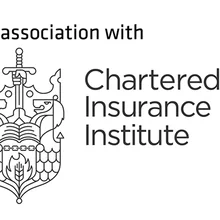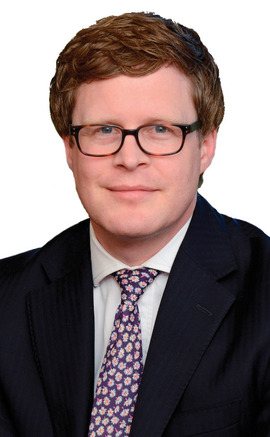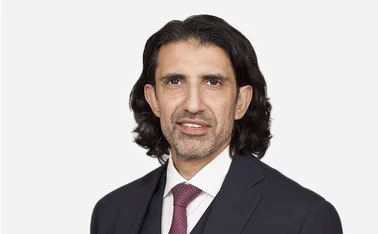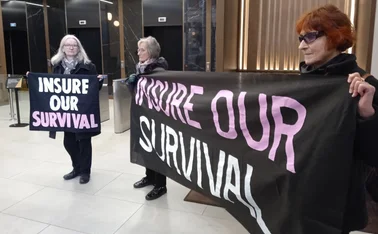
Insurance Census 2017: Face of insurance

Insurance, like many financial services sectors, has a reputation for being pale, stale and male. In Post’s latest research Michèle Bacchus finds out if the description still fits and what the industry is doing to effect change
Methodology
We asked more than 60 insurance companies and brokerages across the UK between December 2016 and January 2017 to take part in a survey of the demographic profile of their employees and their board members. The information was treated in strict confidence and collated to present an overview of diversity within the sector. Of those contacted, 26 firms supplied responses to all or some of the questions in the survey. An online survey designated for completion by individual insurers and brokers was also accessible within the same time period and attracted 342 separate responses from more than 150 companies. Overall, the data collected from the two surveys accounts for 94,951 employees working in insurance.

White, middle-aged and male. That used to be the image of the insurance industry and many would argue this is still the case. Yet the days of pricing a risk in a smoky pub on the back of a cigarette packet have now become historical anecdotes, so who are the people making those same deals today?
As a key driver of the UK economy the insurance industry with its 305,500 employees contributes an impressive £12.2bn to the country’s gross domestic product and makes up an important part of the 1.26 million people working in the financial sector, according to the Association of British Insurers. At present, there are 111,600 employees working in insurance companies and 193,900 employees in third party services such as broking.
In total, just shy of 100,000 (94,951) employees across UK brokerages and insurance companies are accounted for in this census, representing nearly one-third of those working within insurance today.
Average age rises
Despite the fairly widespread acknowledgement that more young people must be recruited into the sector to ensure its survival, the average age of an insurance employee has risen to 39 since Post’s 2015 census when it was 36-and-a-half.
The insurance sector now employs fewer 18 to 24-year-olds than the current national average of 12.4%. Young adults employed by the industry have dropped from 18% in 2015 to 10% in 2017.
Huw Evans, director general for the Association of British Insurers, comments: “It’s disappointing we are not attracting more younger workers. By 2020, 70% of the workforce will be Millennials and they don’t view insurance favourably as an industry to work in. And yet it is an industry that is providing a test bed for technological innovation that offers a wide range of varied career paths and that values and rewards its employees.”
The industry must ensure the youth become privy to its hidden gems, and where better to start than in education?
The sector has been busy bringing in young people via apprenticeships and graduate schemes. Only one-sixth of companies involved in the census did not have apprenticeship schemes in place. And for nearly half of those that did, over 80% of their apprentices chose to remain for up to 12 months afterwards. The trend precedes the introduction of the apprenticeship levy this April.
The Chartered Insurance Institute recorded an impressive 25% increase in apprenticeship take-up from 2014 to 2015 compared to 2% overall in the UK.
Figures for 2016 are yet to be released but Ant Gould, the CII’s director of faculties, says there are “early signs of a modest increase” and hopes for a “massive spike in the numbers taking on apprentices if the rhetoric in the market is matched by action”.
However, Suzie Noble, Brightside’s chief people officer, says: “Despite work to champion diversity and encourage young people to build a career in insurance, our industry still struggles to attract young talent. It’s a strong reminder to us that we need to drive a real cultural change.” Brightside works with local schools to help shape perceptions of the insurance industry.
At the other end of the spectrum, the census shows just 1% of the insurance workforce are 65 or over, compared with the UK’s 3.8%.
As one steps into the boardroom, almost 5% of insurance boards are made up of people aged 65 or older, compared to 9% in 2015.
Today 16% of insurance boards are under the age of 45, up from 11% in 2015.
According to the BDO 2016 Board Review, the average FTSE 100 board member age is 57, older than the insurance average of 51, indicating the market has a slightly younger board composition than its financial colleagues.
Changes in ethnicity
An ageing white population alongside a young ethnic population. This is the demographic projection described for the UK in just a few decades’ time. From 2% nearly 50 years ago (according to research by the University of Warwick), to 14% today, ethnic minorities make up one-tenth of the UK workforce and by 2050 that figure will jump to one-third.
Consultancy firm McKinsey has found that companies with a diverse workforce outperform their competitors.
In the insurance sector, just 10% of employees are BAME (black, Asian and minority ethnic). But their numbers have risen by 12% since the 2013 Post census, with mixed race employees experiencing the biggest increase, from 0.9% to 1.6%.
Two-thirds of insurance companies claimed to have equal opportunity groups in place, but only 50% of the online respondents knew about them or any other programmes that encourage diversity. One respondent stated: “As we have no non-white employees, this is not relevant.” A few companies stressed rather proudly that they recruited “entirely on merit” but interestingly these firms were the ones without equal opportunity groups.
Dominic Christian, CEO of Aon UK, believes an inclusive culture “leads to a more engaged, innovative and productive workforce”, as well as reflecting the complex and changing needs of clients.
Roles focusing on diversity are taking root within insurance. Sue Chittock, diversity and inclusion manager at Aviva, explains why: “In considering the differing needs of your workforce, you are in fact also considering the differing needs of your customers.”
Just 3.6% of the online census population professed to know of a BAME person in C-suite senior management, while 25% knew none.
Once the boardroom is reached, statistics are even more blunt. The insurance boardroom contains no blacks, no Chinese and no people of mixed race, a figure that has not changed in the time Post has been conducting the census. There was not one BAME non-executive director either. In total, 3.6% of the insurance boardroom is non-white, compared with 8% for the FTSE and a national average of 6.7%.
Sexual orientation and identity
Employers are still very uncomfortable talking about it, but for the first time since Post launched the Insurance Census in 2013, sexual identity has been introduced as a category for data collection. This question was completed by just over three-quarters of the online census population and one-quarter of the company census population.
The overwhelming majority of companies explained they just did not have this type of data. “We do not ask our board members about their sexuality as part of the recruitment process,” wrote one HR representative.
The industry currently does not figure very highly in ratings for diversity: the Deloitte Talent in Insurance 2015 report, based on over 200,000 business students in 30 markets, revealed that out of 40 appealing employer attributes, the insurance sector ranked in the lower quartile for ‘acceptance towards minorities’.
When filling out the census, a few companies decided to alter the question. In some cases the words ‘transgender’ and ‘queer/questioning’ were deleted and replaced by ‘other’. This discomfort isn’t specific to insurance. Research by London School of Economics found that only 17% of FTSE 100 companies made reference to transgender people.
The government estimated in 2004 that between 5% and 7% of the population were likely to be lesbian, gay or bisexual. Today, 14% of the insurance population do not see themselves as heterosexual. The online census results give a lower percentage of 8% maybe because this population is a bit older than the average employee data submitted by companies.
Paul Roberts, CEO of the LGBT Consortium, comments: “It is encouraging to see the inclusion of sexual orientation data monitoring within industry-wide surveys, something the LGBT sector has been working towards for many years. What is noticeable, and reflects similarities within the field of gender, is what we would perceive to be the under-representation of lesbians and new opportunities needed to ensure all women feel fully included and supported within their workplace.”
Statistics about sexual identities in the boardroom were too scarce to provide any concrete results: just two companies responded, both of which contained one gay person on the board.
Just as the FTSE 100 celebrate the target attainment of the 25% women in the boardroom, census results for this year show the insurance sector has reached that goal. But more could be done to improve gender balance.
Underwriting and management are currently the domain of the male employees, while claims and operations departments employ more females. However, the ratio splits were fairly small at around 60:40 male/female. One company did state, however, that its claims department was “predominantly female”.
Returning to work
Almost 90% of all respondents believe their firm does enough to encourage women to return to work after having children. Back-to-work programmes and shift patterns now seem commonplace in organisations for parents.
Where they are not, employees lament about it. “We have no return-to-work programmes for women and/or men who now want to take up shared parental leave opportunities,” bemoaned one online respondent. “Women in client-facing roles also struggle to get their clients back or new business.”
Jost Wahlen, head of learning and development at Allianz, observes: “It’s really important that we have a mix in the workplace and that flexible working and people returning to work is encouraged. It’s not enough to recruit talent, it’s crucial to keep it too.”
The question on flexible working brought up a fairly even split, with half of the online respondents saying their company endorsed flexible working and remote working. Company data stated most flexible working policies had been in place for a number of years. One company representative explained: “We understand that home/flexible working plays an important part attracting and retaining the best possible staff.”
Another way to appeal to staff is with a competitive salary. However, results show that women are being paid less than men for the same job. New gender pay reporting regulations are due to come into force this year.
For now, company census data reveals a £5000 gender pay gap, with men on average earning £31,700 and women £26,100 a year. The online survey of individuals reveals a much larger pay difference of £10,000: men on average earned £55,000 but women only £45,000. Both differences amount to around 20%, compared with a 30% gender pay gap in the legal sector.
Most surprisingly, the online census found that brokerages were paying three times more men than women £50,000 or more a year, whereas insurance companies paid men and women this amount in equal numbers.
Females account for almost one-quarter of boardroom presence for both directors and non-executive directors. But brokerages had women accounting for just 11% of NEDs while in insurance companies women made up 36% of NEDs.
Around three-quarters of all respondents were against implementing a quota system.
“It’s going to take a long time for the white male domination of broking to subside,” remarks Howard Lickens, CEO of Clear Insurance. “We need to make sure that as many young female and ethnic staff are attracted to the industry as possible, as it’s going to be a long haul.”
Encouraging a better reflection of the UK’s demographics within insurance will guarantee the industry’s place in society and ensure it meets the needs of its clients. A good reason to start addressing these issues today.
White paper
Get your hands on the complete Insurance Census with lots more data comparisons between 2013 and 2017, analysis and comment for just £299. Contact dean.crosdale@incisivemedia.com or 0207 316 9221 for more details.
A word from the CII: Keep the pressure
As a profession, we don’t always look like, or perhaps more importantly, sound or act like the wider community that we serve.
And that matters. Not because it’s fashionable to have a diverse workforce or to support a corporate social responsibility initiative, but because more diverse teams bring new ideas, challenge more conventions and help us think more like our customers.
 The UK population is clearly ageing, but our profession is ageing faster. The average insurance employee is now two-and-a-half years older than the average employee two years ago. That does not just mean that we have all aged (sadly we have), but that we’re not bringing in enough younger talent to keep the average constant or even lower. And that is not healthy or sustainable.
The UK population is clearly ageing, but our profession is ageing faster. The average insurance employee is now two-and-a-half years older than the average employee two years ago. That does not just mean that we have all aged (sadly we have), but that we’re not bringing in enough younger talent to keep the average constant or even lower. And that is not healthy or sustainable.
Encouragingly the vast majority of firms now has an apprenticeship scheme in place, which should help bring in some more diversity. The imminent apprenticeship levy is likely to drive even further uptake in apprenticeships, and remember apprentices don’t have to be school leavers, so this could help retrain existing staff or bring in new talent from other sectors or following career breaks.
It’s perhaps unsurprising that we are still more white and more male than the wider working population, or that men dominate senior management and women are more prevalent in claims and operations. These things don’t change overnight. But we do need to keep the pressure to make that change and to make it faster.
Getting the best talent is often cited as one of the biggest strategic challenges insurers and brokers have, along with obtaining the skills we believe we need to succeed as new competitive pressures and technological advances make old ways obsolete. So why wouldn’t we fish in the widest pool available to get the best chance of finding and developing that talent, rather than restricting that pool to people who look like the person they’re sitting next to?
Ian Simons, marketing director, Chartered Insurance Institute
This article is an extract taken from the Insurance Census 2017: face of Insurance. Want to find out more?
Only users who have a paid subscription or are part of a corporate subscription are able to print or copy content.
To access these options, along with all other subscription benefits, please contact info@postonline.co.uk or view our subscription options here: http://subscriptions.postonline.co.uk/subscribe
You are currently unable to print this content. Please contact info@postonline.co.uk to find out more.
You are currently unable to copy this content. Please contact info@postonline.co.uk to find out more.
Copyright Infopro Digital Limited. All rights reserved.
As outlined in our terms and conditions, https://www.infopro-digital.com/terms-and-conditions/subscriptions/ (point 2.4), printing is limited to a single copy.
If you would like to purchase additional rights please email info@postonline.co.uk
Copyright Infopro Digital Limited. All rights reserved.
You may share this content using our article tools. As outlined in our terms and conditions, https://www.infopro-digital.com/terms-and-conditions/subscriptions/ (clause 2.4), an Authorised User may only make one copy of the materials for their own personal use. You must also comply with the restrictions in clause 2.5.
If you would like to purchase additional rights please email info@postonline.co.uk








